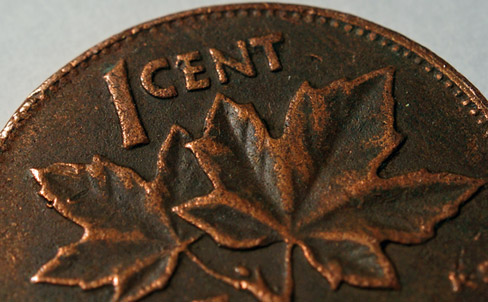
People & Culture
Kahkiihtwaam ee-pee-kiiweehtataahk: Bringing it back home again
The story of how a critically endangered Indigenous language can be saved
- 6310 words
- 26 minutes
This article is over 5 years old and may contain outdated information.
People & Culture

In 1908 the Royal Canadian Mint struck its first coin, a fifty-cent piece. It was the second coin struck, however, that became the most prevalent of all Canadian change. It may have lacked the precious-metal value of the silver dollar, but the penny — officially known as the one-cent coin — assumed its supremacy-by-proportion early on. And as of today, the Royal Canadian Mint will no longer be distributing the denomination.
The one-cent coin has evolved over the past century. Once pure copper, its metal composition has been changed often, due to a flux in the value of metals. Today the standard composition is 94 percent steel, 1.5 percent nickel and 4.5 percent copper-plated zinc. Yet its appearance has remained remarkably consistent — save for the occasional change of reigning monarch on the heads-side.
The buying-power of the penny has significantly diminished since it was introduced in 1858, then produced by the British Royal Mint; thanks to inflation, it now takes about 27 cents to purchase what originally cost a single cent. To mark the passing of the penny, we’ve collected these recent stories and updates:
Storified by Canadian Geographic· Mon, Feb 04 2013 07:47:35
The one-cent coin is our smallest form of currency. The Royal Canadian Mint makes 816 million pennies per annum. Desjardins Group, in 2007, estimated 20 billion pennies were in existence — translating to roughly 600 pennies for each Canadian. That is a hefty amount of coinage to take in.
Although a penny may be the first coin tossed into a wishing well, or casually dropped on the sidewalk, the coin has survived for more than a century. From walking down the street to cracking open a childhood piggy bank, one is bound to cross paths with a penny. Though the coin may soon be removed from circulation, collectors need not fret: the penny will remain a part of Canadian history for centuries to come.
Are you passionate about Canadian geography?
You can support Canadian Geographic in 3 ways:

People & Culture
The story of how a critically endangered Indigenous language can be saved

Places
In Banff National Park, Alberta, as in protected areas across the country, managers find it difficult to balance the desire of people to experience wilderness with an imperative to conserve it

People & Culture
A century after the first woman was elected to the Canadian Parliament, one of the most prominent figures in present-day politics shares her thoughts on how to amplify diverse voices in the Commons

People & Culture
In honour of Asian Heritage Month, CBC Quebec journalists asked Asian Canadians how they carry their culture